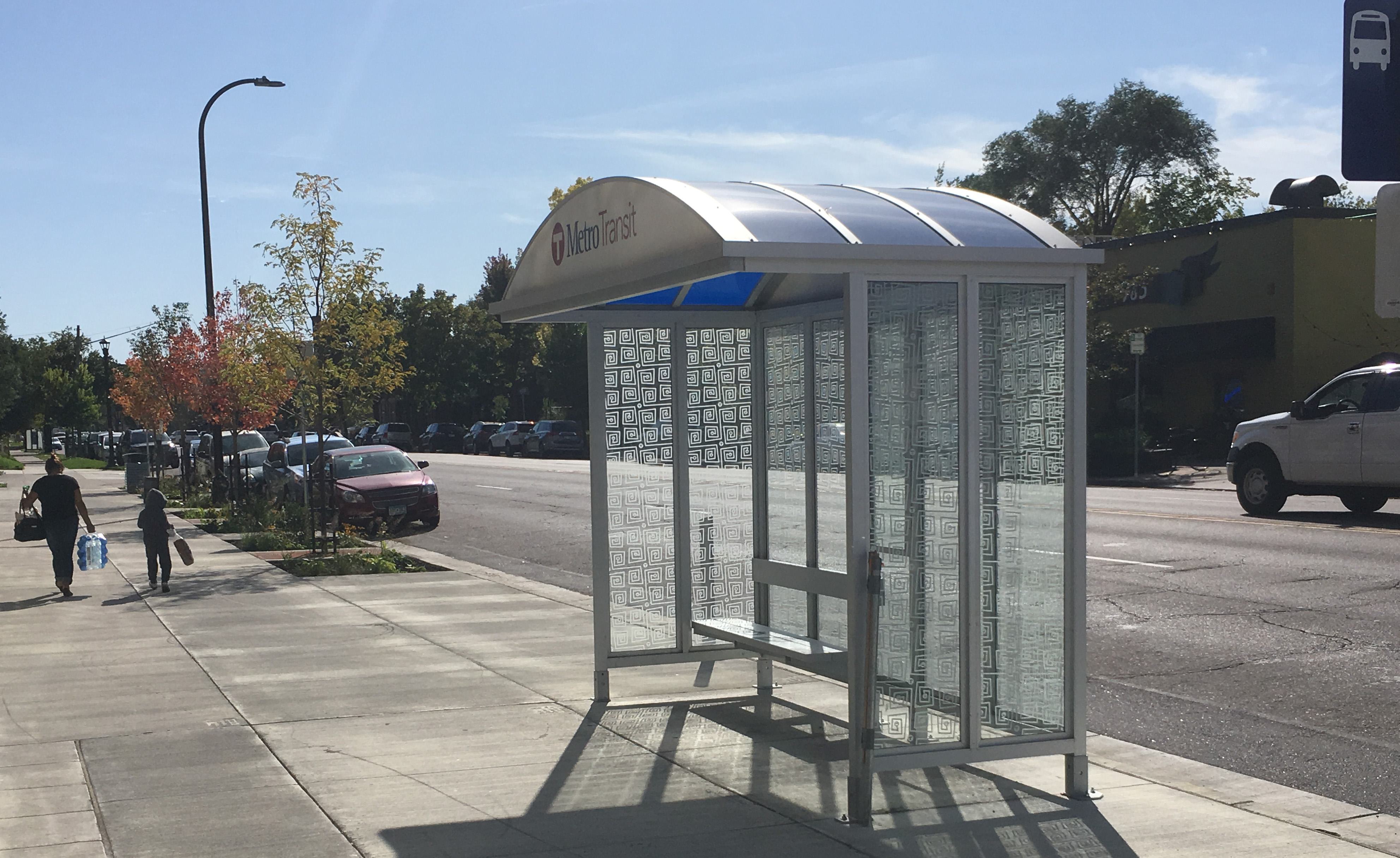
The above bus stop, at 26th Street and Lyndale Avenue in Minneapolis, provides plenty of space for customers to board and exit, a key feature of a good bus stop.
Metro Transit planners often get asked how to accommodate bus stops when roads are rebuilt or new buildings are constructed.
Guidance for designing high-quality bus stops are now summarized in a new design guide they hope will lead Metro Transit and partnering cities, counties, and developers to take a more proactive approach to creating ideal regular route bus stops.
While Metro Transit is responsible for installing and maintaining bus shelters, considerations like sidewalk width, pedestrian access, bike lanes and parking regulations are up to local government. Builders can influence where amenities like trees or planters are located, and keep them clear of areas customers use to board and exit buses.
"This guide is super-visual and easy to use, and we're hoping it can answer a lot of questions before they're even asked," Planner Sonja Burseth said. "There is a lot of productive coordination and goodwill building happening with our partners. This will make those conversations even easier."
The design guide isn't intended to be overly prescriptive, but to give Metro Transit staff and partners a clearer sense of the advantages and disadvantages of design choices. Using bumpouts to make more room for shelters near intersections, for example, creates more space for pedestrians but can slow vehicle traffic.
"A lot of times people will say, 'Why don't you just tell us what the bus stop should look like?' and it's a little bit more complicated than that," Burseth said.
"The design guide will also support Metro Transit's commitment to improving accessibility at bus stops," said Marilyn Porter, director of Engineering & Facilities. In practice, that means leaving enough clear space for riders using mobility or wheeled devices and thinking about things outside the bus stop zone, like curb cuts and crosswalks, that make bus stops more accessible.
Metro Transit relies on other agencies and partners to ensure construction projects maintain or create accessible transit stops.
There are around 12,000 bus stops systemwide, and more than 800 of these sites have shelters. Over the next five years, Metro Transit plans to install new or replacement shelters at 270 bus stops, and to construct accessible boarding areas at an additional 150 bus stops.
Read the Regular Route Bus Stop Design Guide
Learn more about the Better Bus Stops program